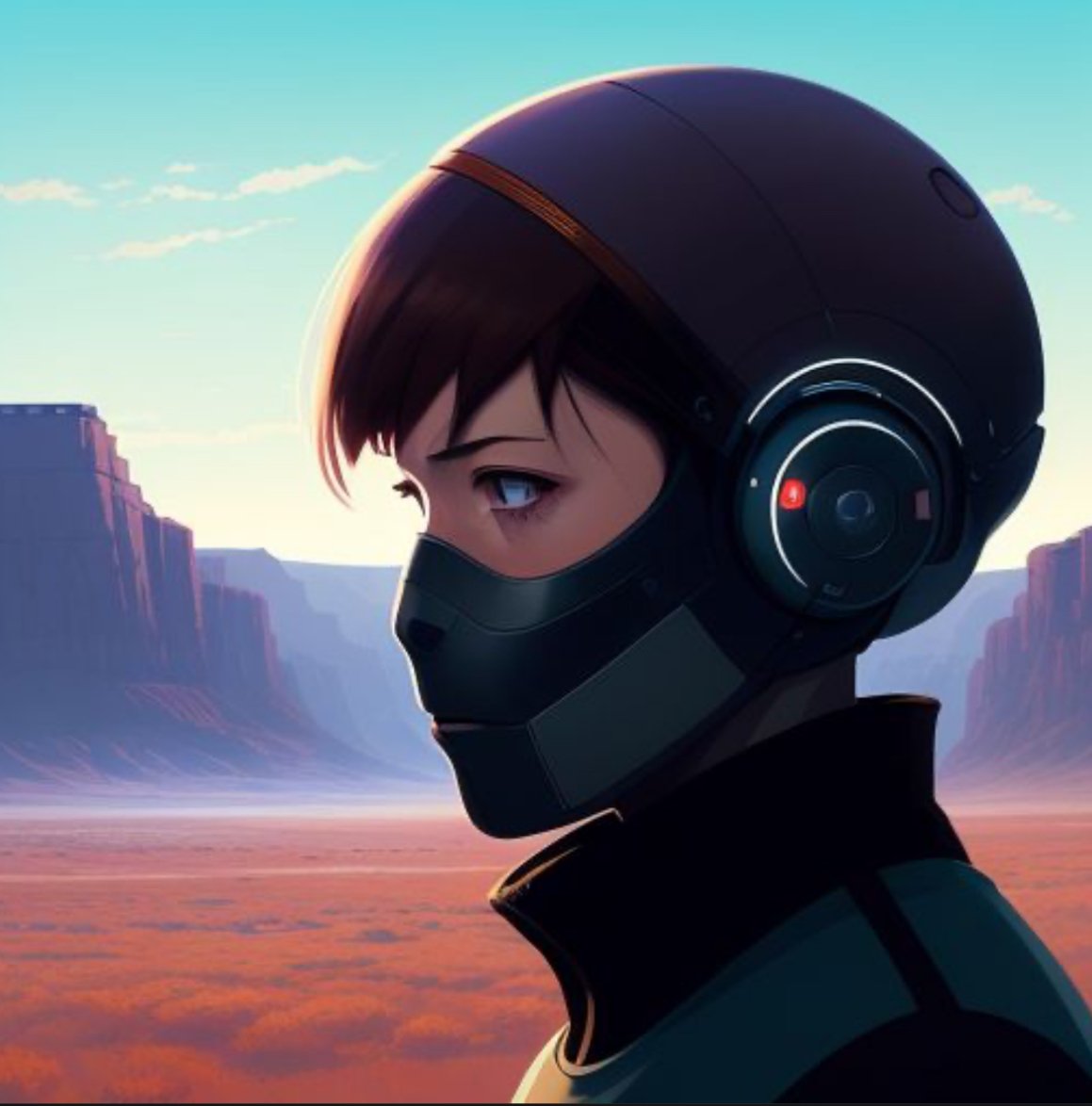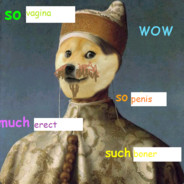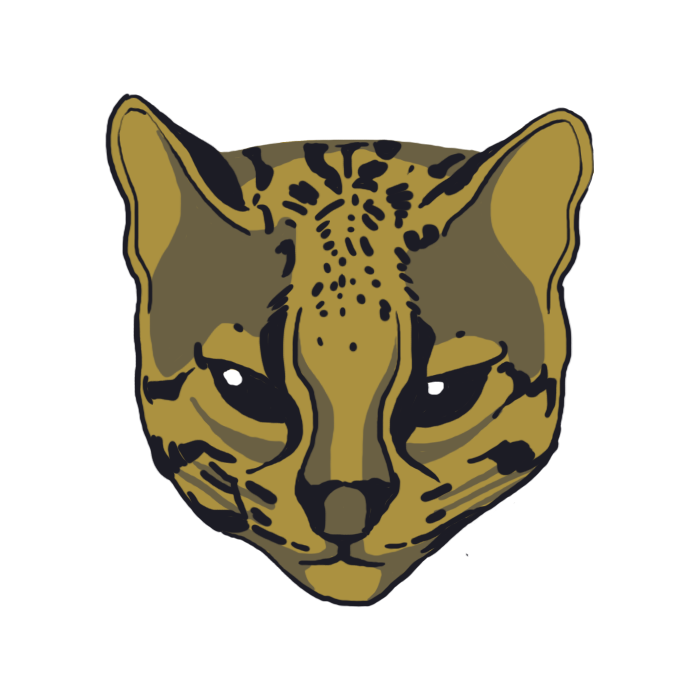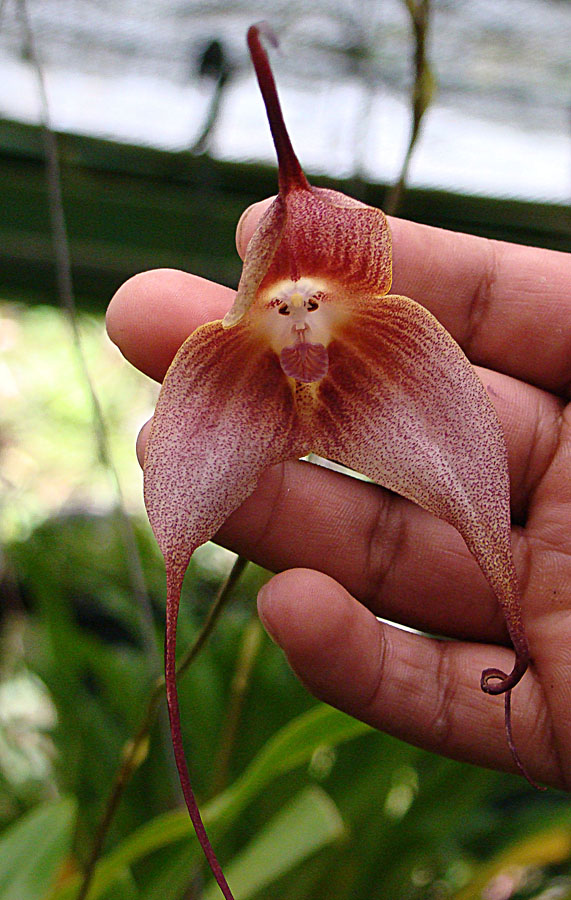The most amazing thing about this is that the plant has never seen a hummingbird.
Think about it. The plant has no eyes nor the ability to change its own leaves. What must have happened? Maybe an ancestor had leaves that randomly, vaguely resembled a bird? Perhaps the descendants that happened to look more like hummingbirds were then pollinated more often than the rest?
Nature is so fucking crazy and I love it.
Wow he’s actually a good artist
Bee porn. What a filthy filthy flower
It also resorted to masturbation for survival
Same
This is species of spider that has evolved to look like an ant. They do this so they can infiltrate the ant’s nests and get a free meal by just eating the ants food.
The thing is the ants blind so there was no point looking the same as they wouldn’t have been able to tell anyway.
The spiders must feel very smug about it tho.
Hehe, they’ll never know
It should, however, emit some pheromone, as the ants use that to identify each other…
Hmm, getting a free meal by looking like the staff…
Can’t they feel the shape?
The plant has no eyes nor the ability to change its own leaves.
You should probably google Boquila trifoliolata.
But yes, it’s impressive if it never met anything that looks like a hummingbird.
Holy shit, thanks for sharing! I think it’s impressive in either case.
For anyone else, here’s an article I found about it: https://www.vox.com/down-to-earth/2022/11/30/23473062/plant-mimicry-boquila-trifoliolata
It’s just a random coincidence. Nothing more, nothing less.
Looks way too much like natural selection than a coincidence.
I think he’s pointing out the fundamental misunderstanding a lot of people have about natural selection: nothing chooses to evolve; there is no active participation. Whether the plant could see hummingbirds or not is irrelevant because it can’t change it’s genetics and mutate on a whim anyways.
Natural selection is when genetic mutations happen by chance, and sometimes those mutations just happen to benefit the survival and reproduction of that individual, so the genetics mutation gets passed on. It’s just a fluke though. It’s a fluke that the mutation occurred and and even bigger fluke that it lead to reproductive benefit.
So the evolution of any kind of survival mechanism is, at its core, a coincidence.
Mutations happen by chance but the result is not random, because natural selection is not random.
Update: Regarding your first part: A lot of people misunderstand the role randomness plays. Evolution is not random and not a coincidence but a consequence of any system that makes imperfect replicas in an environment that rewards (or punishes) certain traits.
How did the system come about? You say this as if the system were intentionally designed. But it is not: the natural order which creates evolutionary pressure is itself the culmination of many coincidences.
I don’t think it was designed but that’s nothing evolution is concerned about. Evolution is (as the name implies) about evolving systems and doesn’t really say anything about how the first replicating “system” came to be because that’s abiogenesis and not evolution.
Yes, that’s all true, but their use of “random coincidence” seems to entirely dismiss the selective pressure that created this plant. Selective pressure is not “a random coincidence”. It’s a long series of random coincidences all leading up to the organism we see now.
It was a very dismissive, useless comment.
Opinion. Literature says this is still being debated.
The appearance of the flowers of Crotalaria cunninghamii has been debated whether it resembles a bird by natural selection or if it is due to chance. The debate is whether the flowers are bird shaped to ward off unwanted predators or to attract certain pollinators, known as Batesian mimicry, or if it is just by chance that they look like birds and humans have associated the shape of the flower with a bird, known as pareidolia. Michael Whitehead from the University of Melbourne stated that the shape of the flowers are consistent with bird pollination, with its large flowers and long keel on its petals. This makes sense because the predominant pollinators of Crotalaria cunninghamii are nectivorous birds and bees.[7] There are a large number of plants with flowers that look like animals, such as the Dracula simia (monkey orchid) that looks like a monkey or the Phalaenopsis (Moth Orchid) that looks like a moth.[8] These plants have the same debate surrounding their unique appearance.
Wonderful. Absolutely wonderful to go on the internet and see some good fuckin plant facts. I couldn’t be happier with this place.
Another cool thing about the plant from that page:
In a paper written by Ds Davidson, published in 1947, it was noted that the Warnman people, an Aboriginal Australian group, used Crotalaria cunninghamii to make canvas shoes. The Warnman people primarily lived in the Gibson Desert and used Crotalaria cunninghamii fibre shoes to protect their feet from the hot sand and rugged stony desert ground. The way the fibre was constructed was by peeling off the soft bark and then tying the smaller fibres together and tying them around your feet.[11] The Indigenous people of the Little Sandy Desert also used the plant in this way, as well as for belts to hang food, such as goanna, from.[12]
TL;DR: Can be found in Australia.
Seeing the up votes and down votes in this thread, I realize this is an unpopular “opinion” but the flowers didn’t necessarily evolve to look like hummingbirds specifically. That many people see it as looking hummingbird-like is more a reflection of the human mind’s ability to find patterns and connections even when they don’t exist. It’s interesting and pretty for sure, and definitely a curiosity.
Same thing for the “monkey orchid”. You see a monkey because the flowers are photographed at an unnatural angle and forced perspective, the photos online where the effect is most visible are the ones with lots of compression artifacts and generally poor quality, and because of the power of suggestion. If you saw these in person (without prior context of the photos), there’s a good chance you wouldn’t even notice the face-like visage unless pointed out.
On the other hand, the “bee orchids” actually are an example where it seems that the flowers have evolved in a way that specifically mimics the appearance of bees (and wasps). These flowers mostly attract male bees and wasps who confuse them for lovely lady bees and wasps and try to mate with the flowers. In the process, they pick up a pollen sac / pollinia, and if all goes well they end up pollinating the flower (or move on to pollinate another one).
There are examples of biological mimicry that result from natural selection pressures, leading to the evolution of such an organism.
Heres one thought experiment on why this plant’s evolution to mimic a hummingbird is not that unlikely (keeping in mind that mutations are random, and whatever ends up succeeding due to natural selection pressures doesn’t necessarily imply a deterministic process):
-hummingbirds select to drink from plants that other hummingbirds visit, leading to
-plant reproducing more because hummingbirds drinking from one flower to another helps with pollination, leading to
-plant evolving to look like other hummingbirds drinking from it so real hummingbirds drink from it
We can’t know for sure without doing research of course, but we have enough understanding of natural selection and evolutionary processes to reason about such mechanisms for existing organisms :)
Edit: doesn’t matter if plant native to Australia.You know continents were joined at one point, and evolution takes hundreds or millions of years at times. Also, I don’t mind being mistaken for chat gpt, I am shit posting anyway lol.
I completely disagree, we can know for sure. This plant is native to Australia. There are no native hummingbirds in Australia. The flowers evolved to look like this before there were hummingbirds around it.
Does it have to be hummingbirds? Surely there are other birds at that size
I am specifically mentioning hummingbirds, since that’s the title, in the image, and the bulk of the discussion in this thread when I looked at it this morning. That being said, no, I don’t think it has to be hummingbirds.
Keep in mind, these flowers are significantly smaller than most (if not all) hummingbirds, and hummingbirds themselves are amongst the smallest, if not the smallest, birds in the world. So, any species of bird that these flowers attract are going to be significantly larger than the flowers.
Not to mention that virtually all birds that feed from flowers have excellent visual acuity, that’s almost a requirement for them to be successful with this feeding strategy. It seems highly unlikely that the birds would have a difficult time identifying that these are flowers and instead confusing them as a flock of miniature birds feeding from the plant. And, to me, that pretty much negates any argument for selective pressures on the flowers to have birdlike appearance for that purpose.
At least with the example of the “bee orchids” I mentioned in a prior comment, the selective pressures and the overall context make sense and appear to explain why the flowers have evolved to look like female bees and wasps. But the “hummingbird flower” from Australia that kind of resembles the profile of a hummingbird if viewed from a specific angle and out of context doesn’t really hold up, in my opinion.
Chat GPT ass text
What’s your excuse
Oh shit, obligatory chat GPT ass-text
What if it’s not the plant that mimics the shape of a bird?
What if it was the other way around? After all birds aren’t real
Nature be like: You want the same design again? Ok, the same design again lets go!
One of the Discworld books I think has a really well done explanation of it. How little creativity there is. Same design over and over again and as you dissect the critter you find the deeper you go inside the less creativity there is.
An infinite intelligent creator would presumably have done a better job.
This is what design trends 100000 B.C. looked like… wonder when nature will catch up with Web 2.0
Original inspiration for “Invasion of the Body Snatchers (1956 film)”?
Plot twist: Those are actual hummingbirds that the plant ate :D
There’s a moth that looks just like a hummingbird too.
You can do it. The plant isn’t very tall.
Pretty amazing how not only do the leaves look like small birds, but that the plant is also so large it’s difficult to traverse over.










